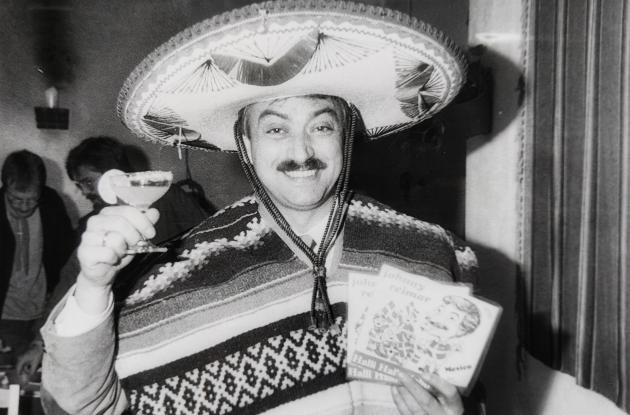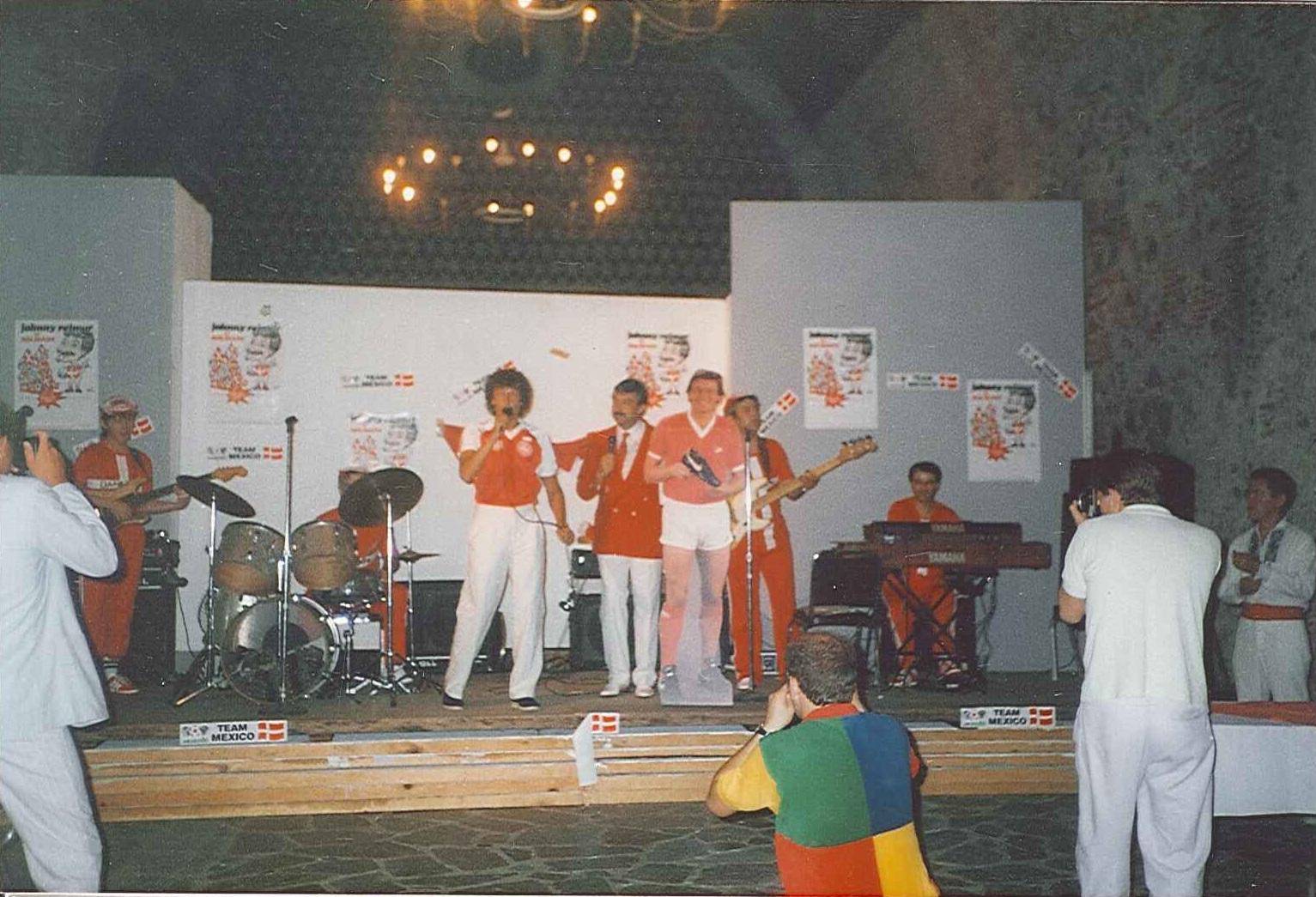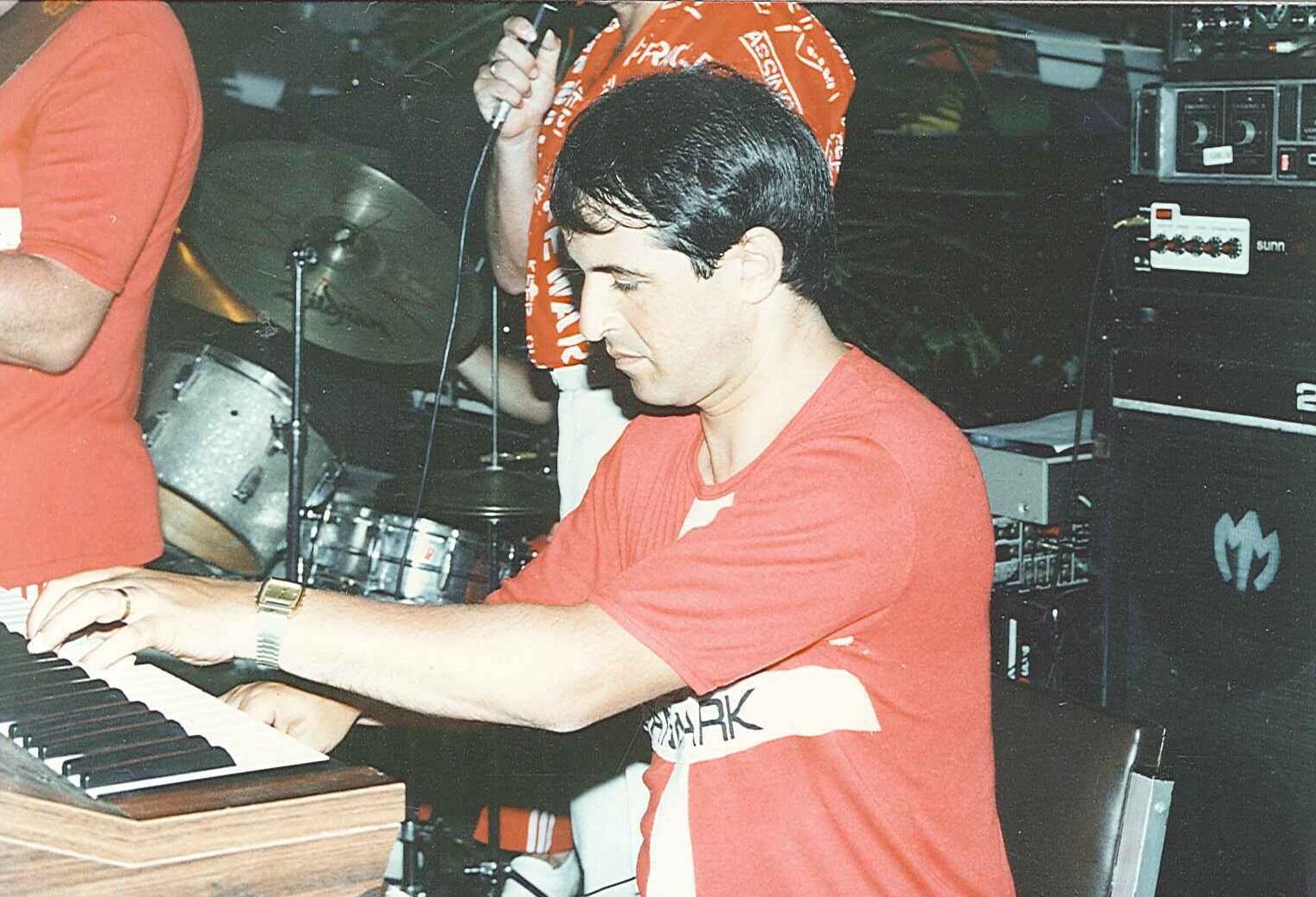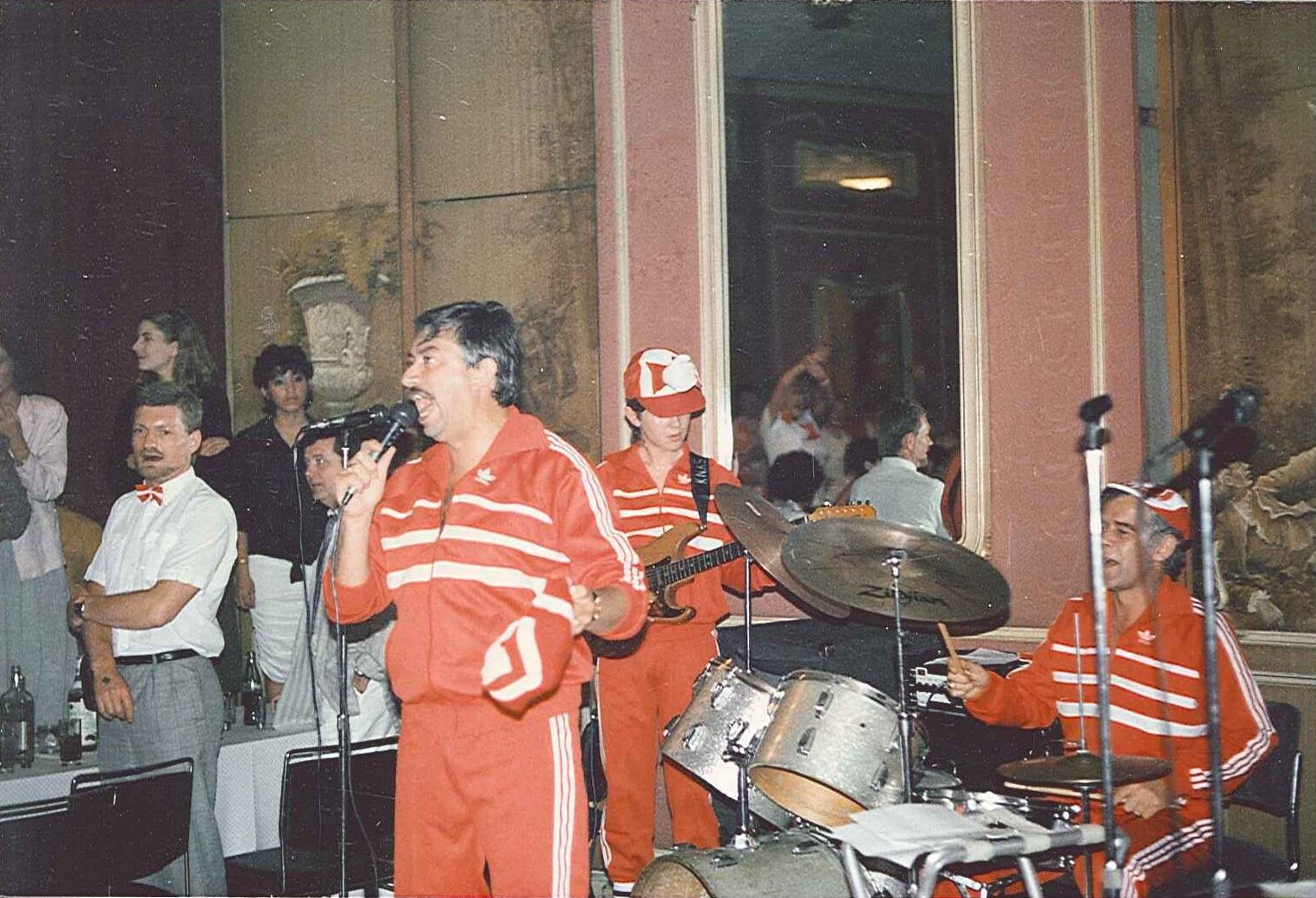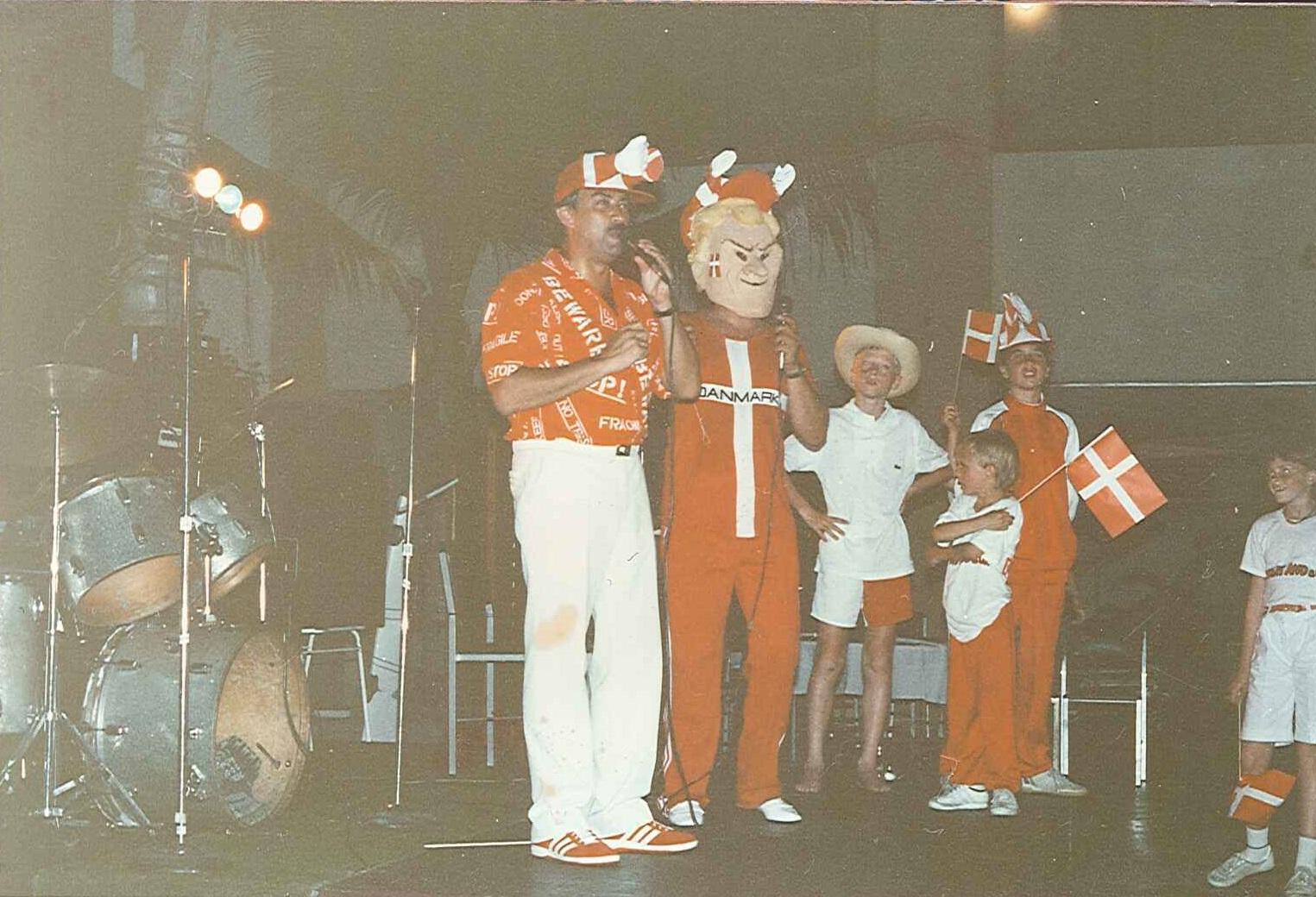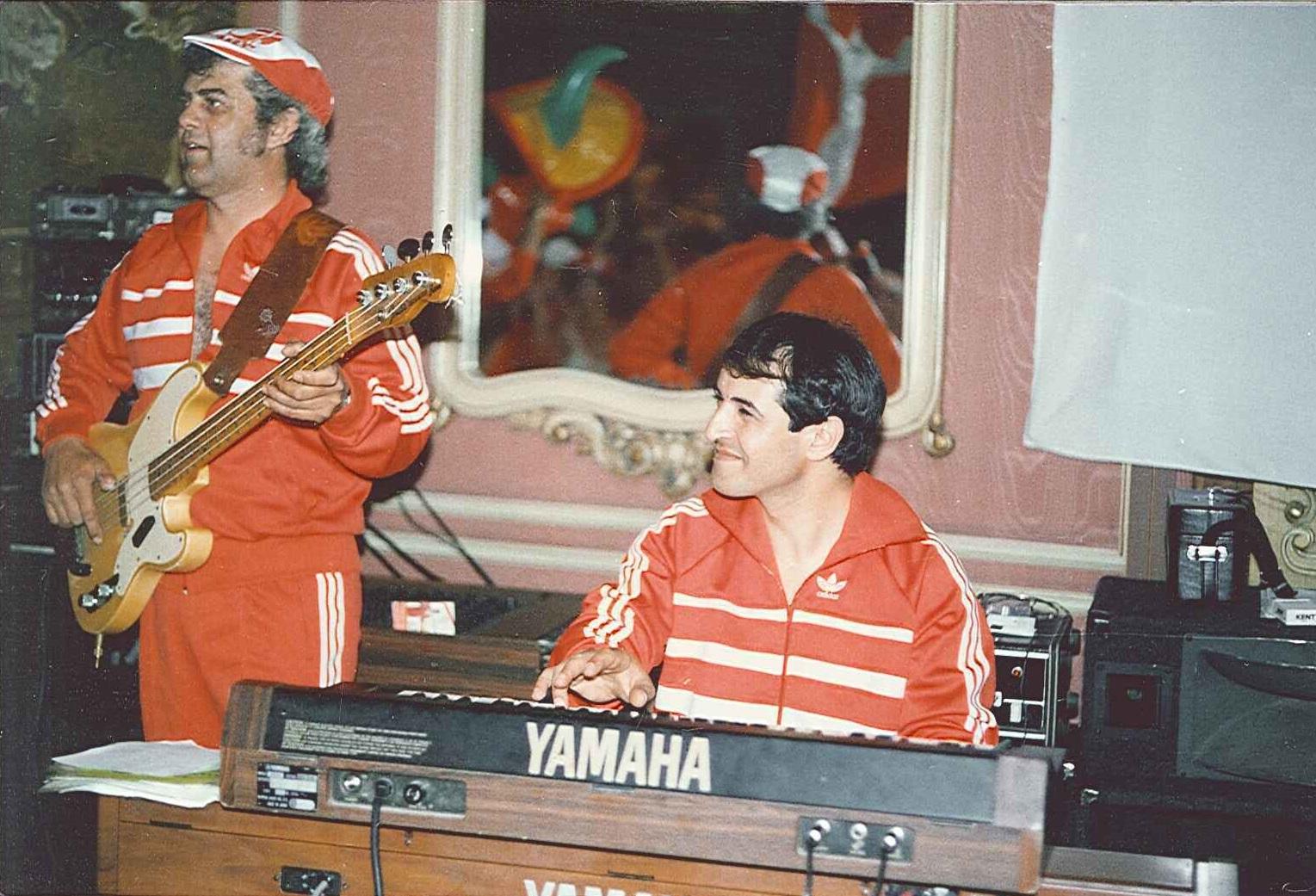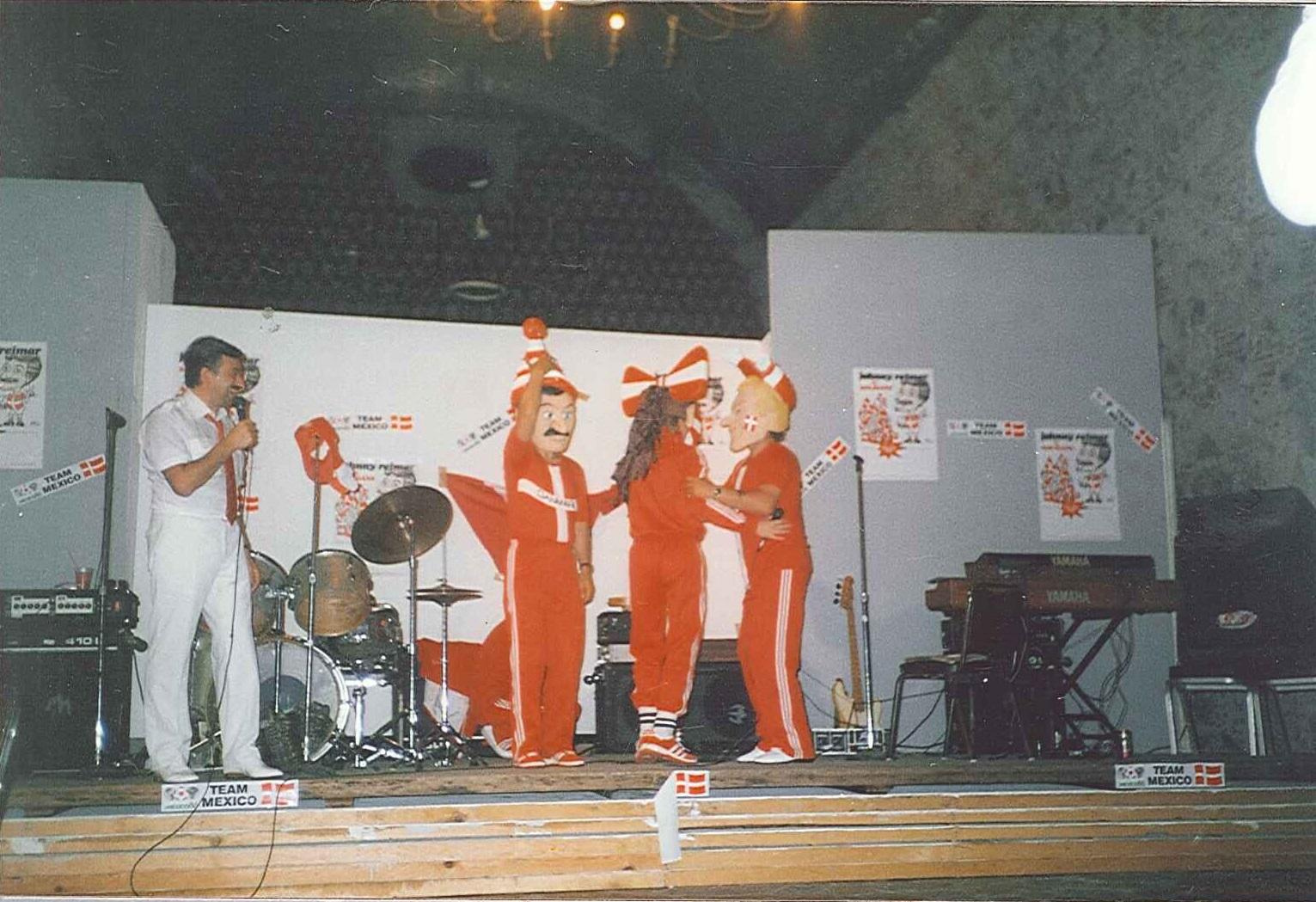Halli Halli Hallo – we'll win in Mexico
A football World Cup needs a good rallying cry. In a production folder donated to Royal Danish Library hides the story of how a genuine World Cup hit came to be.
It was Friday, 15 November, 1985. Johnny Reimar was pretty tired. He was on the plane on his way home from Thailand. He had been there to plan a major party tour for the growing number of Danish tourists. It had gone well, and now he knew what he was going to spend a good part of 1986 on. What he did not know was that he would also learn to find Mexico on a map.
With a slight bump, the wheel of the SAS plane hit the asphalt in Kastrup. Home again. When Reimar later got into the taxi, the driver gave him a buttery smile and said briskly: "Halli halli hallo". Then Reimar knew that he had better stop by the office before going home. When he got there, the phone was ringing incessantly, making him smile wildly, because now he had a sale to conduct. The problem was that he had yet to have a product.
A good idea
Why did the taxi driver's greeting send Reimar to the office? Well, before he left, he had been in the studio. He had been lured by one of his old musician friends, Knud Thormod. Knud, like many others, saw good opportunities to cash in on the football euphoria the country had been in since qualifying for the World Cup in Mexico a month earlier. Thormod had several record companies and music publishers, his brother, Svend Christiansen, had a studio, and Reimar had the voice and profile for a good football party atmosphere, so it was just right.
Together with the lyricist Fini Jaworski, who was quite well versed in the musical nooks and crannies of the world from his job in Denmark's Radio's discotheque, they went in search of an old Mexican melody they could use. The choice fell on "La Raspa", which was one of the best known of its kind. It was of unknown origin, and that was a clear advantage. Because by signing himself on as the arranger, Reimar got the composer's share, and the music publisher the rest. He then also made an extra effort, because the verse between the Halli Hallos was his own invention. When the occasion led them to start a new company with both record label and music publisher under the name Eldorado APS, they kept it all themselves.
"Halli Halli Hallo" was recorded at the beginning of November 1985 in Svend Christiansen's "Sun Studio". It was a classic Johnny Reimar Party production. It sounded like Reimar was at the head of a large party orchestra in front of a singing and cheering audience. In practice, it was a small six-piece orchestra, and the choir a single woman and two men, including Thormod himself. It was the speciality of Reimar and the pair of brothers to fire up the reverb well and let each person sing on different tracks, so that it all sounded like a million. They had been doing this for years, so it was an easy task.
On 7 November, 1,000 records were ordered at the record factory in Hønefoss in Norway, and according to the order form, they had to hurry a bit, as it was a "football single". There were no such ones on the market yet, because the qualification for the WC was, after all, quite new. And Thormod knew that it was about being first. And then Reimar went to Thailand.
World Cup in Mexico 1986
The 1986 FIFA World Cup was held in Mexico between 31 May and 29 June. The World Cup title was won by Argentina, who beat West Germany 3-2 in the final. Denmark participated for the first time ever in a World Cup final, and won its opening pool with three victories over Scotland, Uruguay and West Germany. However, Denmark was eliminated from the tournament after the round of 16, when the team conceded a painful 5-1 defeat to Spain.
15:25 Football: Ireland-Denmark
They both knew a thing or two about making hits. The first step is the good idea. The second step is the right production, and the third the right launch. Thormod believed that he had already achieved the first two steps, and then he just had to find a good way to get the song out to the people. And in the middle of all the planning, he suddenly had a crazy idea.
Although the Danish national team had already qualified for the WC, they were missing a single group match. It was to be played on Wednesday 13 November in Dublin. As always, the match was broadcast live on DR TV.
When there were major national events such as national football matches, the viewing figures were sky high. That was what Knud Thormod had in mind when, in the days leading up to the match, he started the car and drove towards the broadcasting studio. How he found the sports editor and persuaded them to play "Halli Halli Hallo" fades into the mists of time, but he succeeded. The song was played both before and after the match. The feature was something with a doll waving the Danish flag in time to the music. That was all.
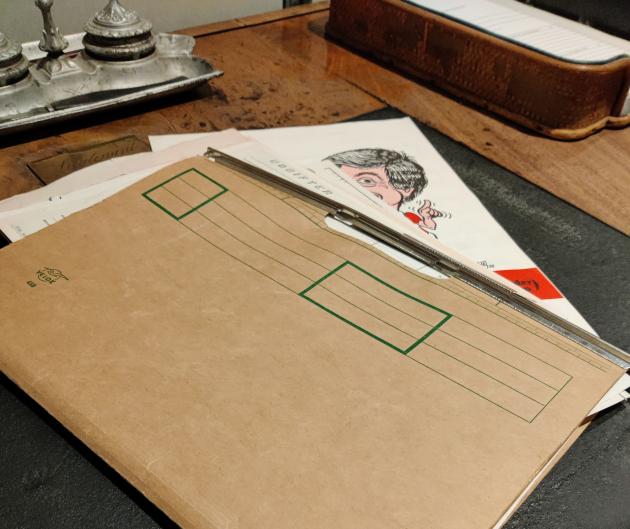
Photo: Det Kgl. Bibliotek
"The football song from TV"
Knud Thormod was happy when he switched off his television at home in Havnsø after the match. He was sure he had hit the jackpot. And quite right.
The following days he got busy. There was a lot of mystery about who was behind it, because it had not been mentioned on TV. But according to Reimar, at least the taxi driver at the airport had figured it out. And when it dawned on Reimar, action had to be taken.
Already on the Monday after returning home, he was in full swing. The newspaper BT had a big interview with him in which he declared that this was his biggest hit since "Du burde købe dig en tyrolerhat" in 1969. According to Reimar, it had sold 50,000 copies, and Reimar himself believed that "Halli Halli Hallo" appeared to beat that record. It was quite a hunch, considering that not a single record or cassette had yet been sold, but there was no need to undersell themselves. And he was of course proven right.
The record went straight into 5th place on the official Danish singles list, which was presented in BT on Friday 6 December. The album subsequently sold rapidly up to Christmas, and on New Year's Eve it once again received a huge helping hand from Denmark's Radio. The song simply closed this year's New Year's show, which was headlined by Reimar's good friend, Jørgen de Mylius. The entire audience had been instructed in a choreography that was hilarious and musicians dressed as Mexicans, and they had even got Frank Arnesen, Søren Busk, Klaus Berggreen and Morten Olsen from the men's national team to sing along in a small filmed sequence. You could not ask for better help on the way to the top.
Since the hit list was then based on figures for the previous week, the effect could only be read a little into January 1986, but then bingo. "Halli Halli Hallo" reached number one in the middle of the month, and BT was able to interview a proud Reimar, who announced that the song had also travelled abroad. He said that he had been contacted by the West German Football Association, who wanted to make the song their official World Cup anthem. However, he politely said no thanks for patriotic reasons, he explained.
Because of Walter & Carlo and their "Op på fars hat", the song only got two weeks at number one, but overall the mission was successful. Although many competing Mexico songs emerged in the run-up to the World Cup in June 1986, half of the year belonged to "Halli Halli Hallo" and Reimar, who was now Denmark's football king. On the radio, television, BT, in the Donald Duck magazine, around the country with his new "roligan" (opposite of hooligan) concept, and, when it finally came time for the world championship itself, also around Mexico. Here, his Mexico battle song had long since been outcompeted effectively by "Re-Septten", which was released just before the championships. But until then it was Reimar's World Cup.
The launch of "Halli Halli Hallo" is a textbook example of how to create a hit in 1985. No one mastered that art better than Johnny Reimar. He had the experience, the network and the audacity to pull off a stunt like this. The fact that he and Thormod only reached half way towards the 50,000 records and tapes must have been numbingly indifferent to them. They got the hit and that was all that mattered.
"La Raspa"
The melody to "Halli Halli Hallo" is an old Mexican folk song. How old it is, no one really knows. On the other hand, there is no doubt as to when it really became known. That was in 1947.
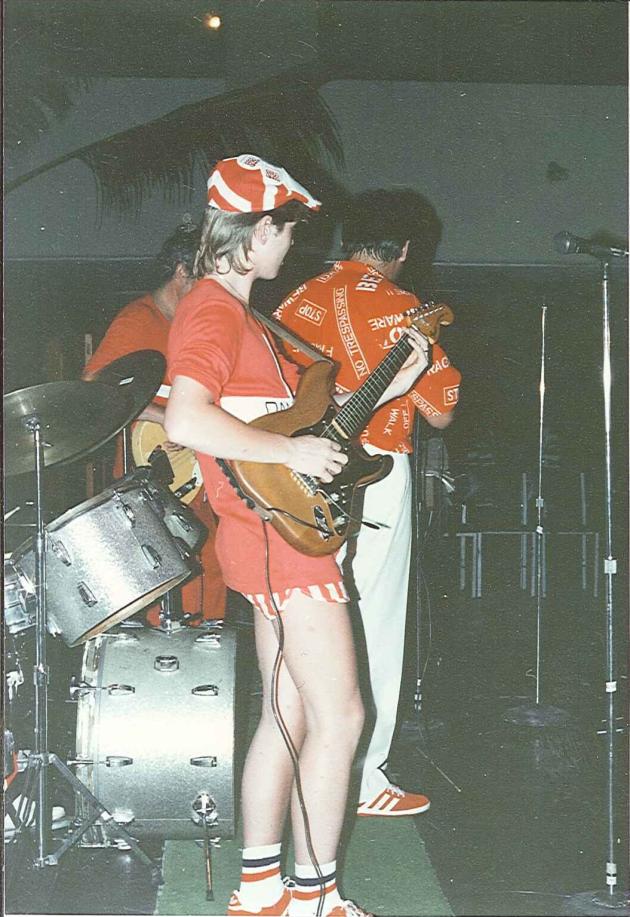
Photo: Privatfotos
At that time, films had both colour and sound, and musical films were the big thing. In the years after the end of the Second World War, there was a great demand worldwide for exotic elements from warmer climes, and in 1947 the turn had come to Mexico. In the Hollywood film "Fiesta", the Mexican actor Ricardo Montalbán could be seen in the lead role as the bullfighter Mario Morales, who would rather be a musician. The film ends well, and throughout you are entertained with plenty of Mexican music. Including a central scene where the main character and an orchestra provides the music to a Mexican folk dance. In the middle of the dance scene, you hear "La Raspa", as the song was originally called.
The importance of the film to the spread of the song was monumental. Before that, there was, as far as is known, only a single recording of the song worldwide. A few years later it was a worldwide hit. In Denmark, the film had its premiere in May 1948. To mark the occasion, the film company behind it, Metro-Goldwyn-Mayer (with the roaring lion), together with Danse-Ringen, organised a large screening in Tivoli, where you could learn to dance "La Raspa" . In the following weeks and months, "La Raspa" slipped into the country's dance orchestras' repertoire.
The first time it was played on the radio was in connection with a live broadcast from a dance restaurant, and from there it almost exploded. In 1949, "La Raspa" was even published on sheet music with Danish text by Georg Otto, one of Otto Leisner's cover names. In practice, it was an almost verbatim translation of the Swedish version, for which the legendary Povel Ramel had written the text and recorded it himself.
“La Raspa” was recorded in tons of versions in those years, and in the following decades it was revived pretty much every time new musical trends emerged. It is therefore found, among other things, in rock'n'roll versions, in twist versions and of course also a multitude of disco recordings. It was played on the radio every time there was something to do with Mexico, for example during the Olympics in Mexico City in 1968. So it was very natural that it was "La Raspa" Johnny Reimar and company used when they decided to make a football anthem.
Reimar, Schlüter and the war on drugs
Finally. It had been a completely and utterly horrible journey from Denmark to Mexico. Several days of delay, and when Johnny Reimar and the family finally reached Mexico, they almost never got through customs. But it worked. He flew straight from the taxi onto the stage at the fashionable Hotel Plaza. "Halli Halli Hallo, we'll win in Mexico", he sang. The audience was wild, and the World Cup show was on in earnest.
According to the daily press, the travel company behind it all, Team Mexico, had sent around 1,000 Danes on their way to Mexico. They were spread out over three locations, and the plan was that they should all have some good Danish entertainment along the way. Reimar and the orchestra were to be responsible for it. In reality, the Reimar and Thormod families were on holiday. Both in the pool and on stage. Like all other tourists, they took a lot of pictures.
It is clear from Knud Thormod's photos that it was a fantastic trip. From the metropolis of Mexico City to the holiday paradise of Acapulco. With a stopover in the picturesque hacienda where Paul Newman and Robert Redford's characters died at the end of "Butch Cassidy and the Sundance Kid". There are lots of pictures of happy Danes in red and white, and Reimar and company clearly gave it all on stage. In addition to "Halli Halli Hallo" and the other songs, there were also some rehearsed humorous elements. Among other things, there was something about selected audience members having to wear giant papier mache heads representing Poul Schlüter, Uffe Elleman-Jensen, Ritt Bjerregaard and Anker Jørgensen.
But there was also the other side. In several of the pictures, you can sense the poverty that formed the background for that year's world championships. Those interested in history and anyone who has seen the Netflix series "Narcos: Mexico" will know that it was in the middle of a huge drug war, which had been triggered by the murder of an American agent the year before. Behind all the luxury, which was largely financed by the money of the drug cartels, it was a country on the brink of collapse, and on top of all this, disaster struck in September 1985 in the form of a violent earthquake. Many buildings crashed to the ground that day, and in June 1986 many buildings still stood without facades.
No one really knows how many lost their lives, but there were many more than the approximately 5000 the authorities noted at the time. In addition, many lost their homes and jobs, and it was those that the Danish players and spectators could see in the tent camps they passed on their way from the hotels to the stadium. At the stadium, the Danish fans were met by heavily armed military and tanks, which were supposed to ensure calm during the matches. In other words, it was a very contrasting experience for the attending Danes.
Despite the surroundings, it was a fantastic trip for all who were down there. Everywhere they went, they created a little mini-Denmark. With their red and white caps with clapping hands as a permanent uniform and "Halli Halli Hallo" as the theme song. And the national team did excellently on top of that – until Jesper Olsen kicked the ball back to Butragueño, and the party ended with a 5-1 defeat to Spain. The Danes went home. Soon Poul Schlüter filled the headlines. The genius when Laudrup waited and waited before sending a cool ball into the Uruguayan goal was remembered. Earthquake-stricken and drug war-plagued Mexico was quickly forgotten.
As soon as Reimar landed in Kastrup, he was planning SAS's fortieth anniversary at the same airport. After that, the beer festival in Faxe. And then the summer came to an end.
How do we know this?
The story of "Halli Halli Hallo" is based on various newspaper articles in Mediestream, DR's digitised programme overviews, Johnny Reimar's autobiography "Mr. Showbiz. Fra Rock til Ridder" (Reimar 2000), telephone conversations with Reimar and Thormod, and not least the production folder from the publication, donated to Royal Danish Library by Knud Thormod.
